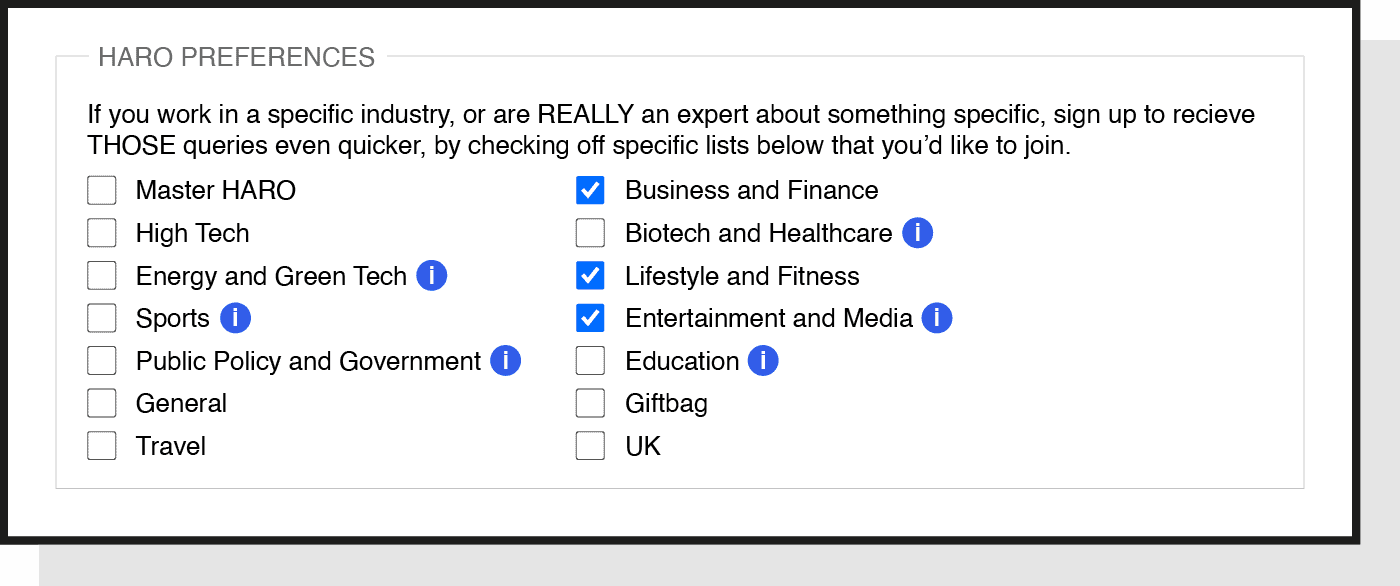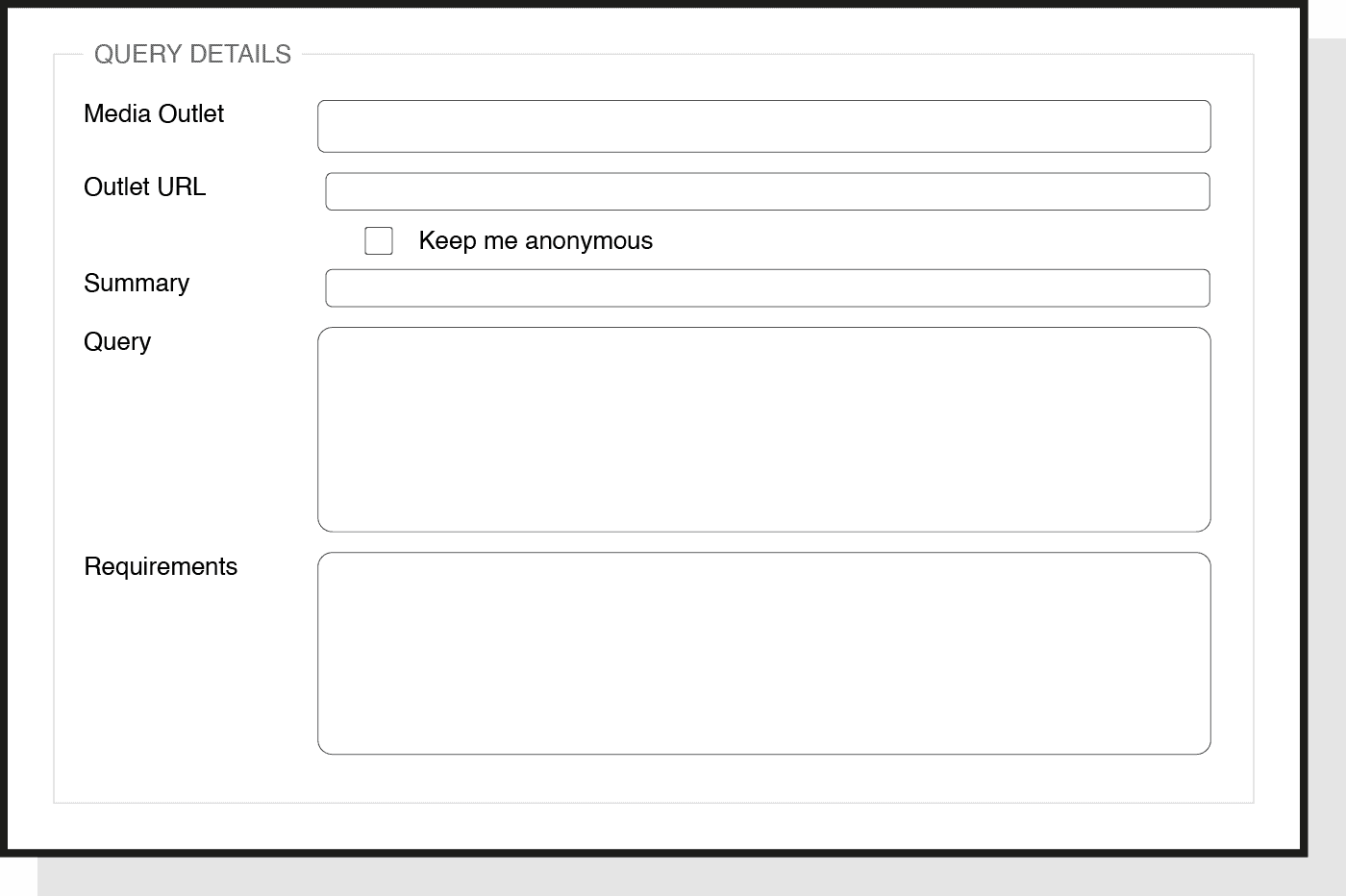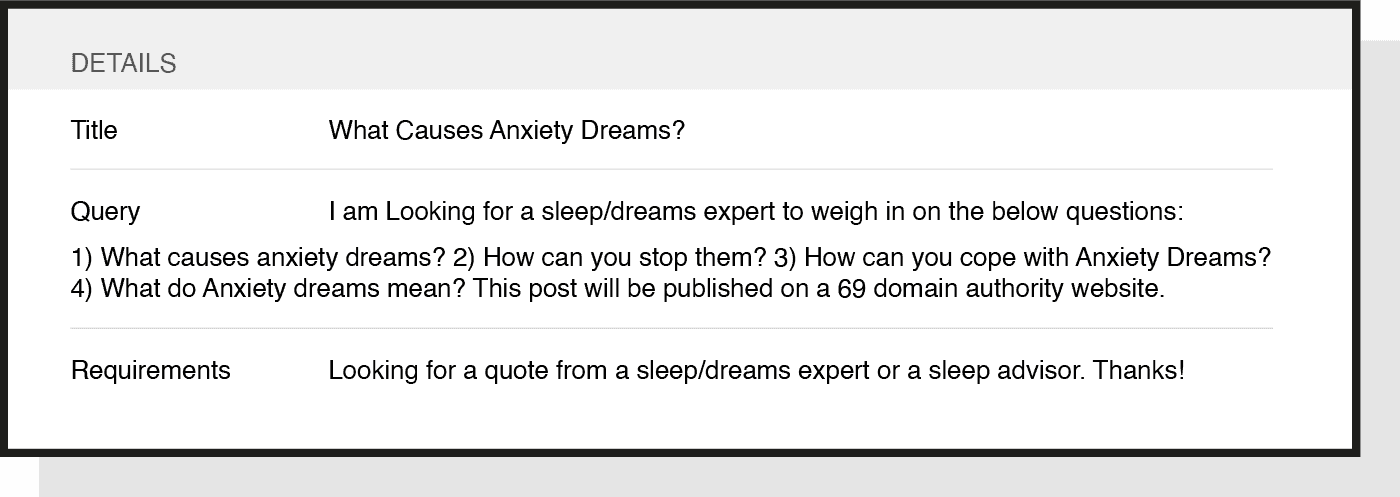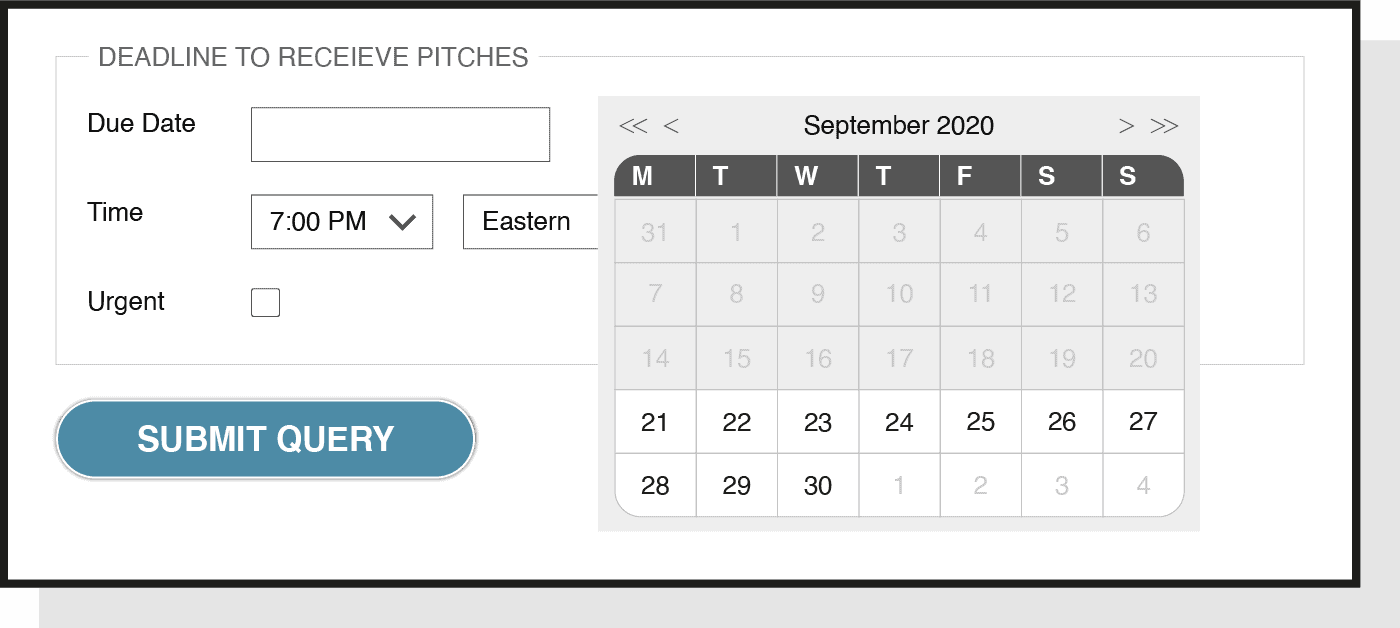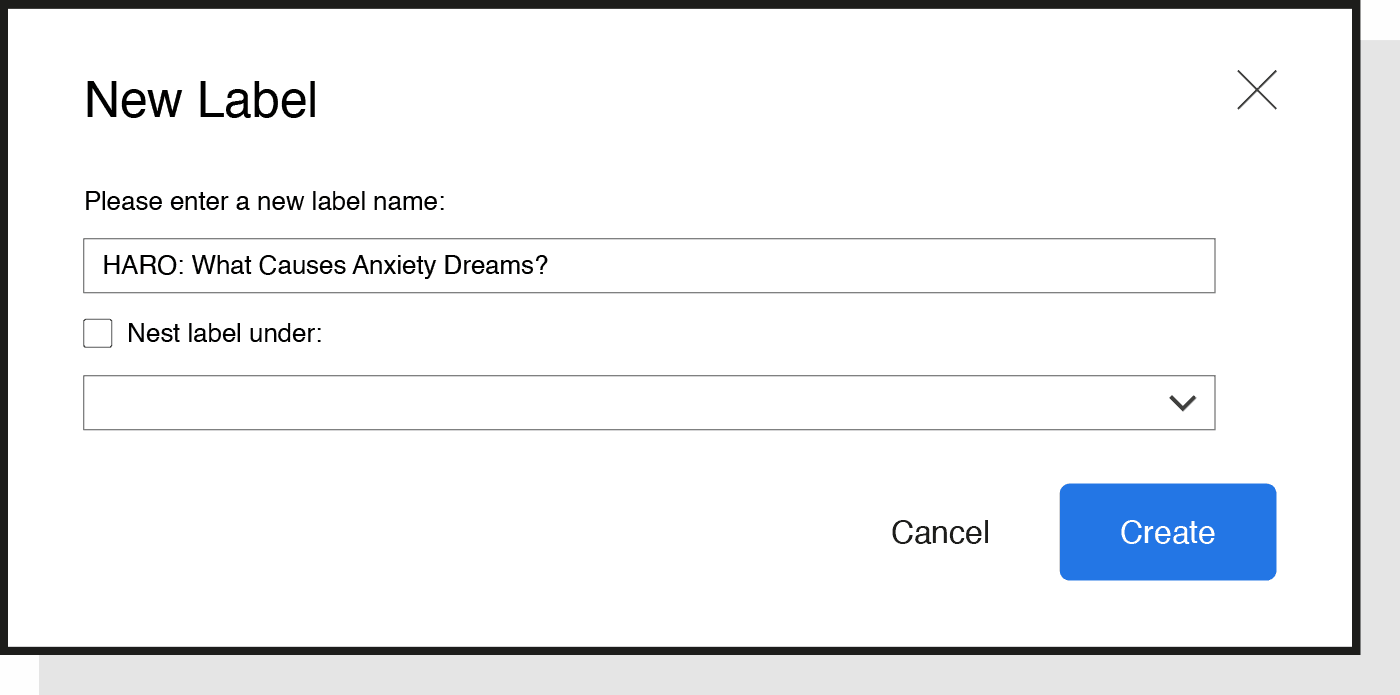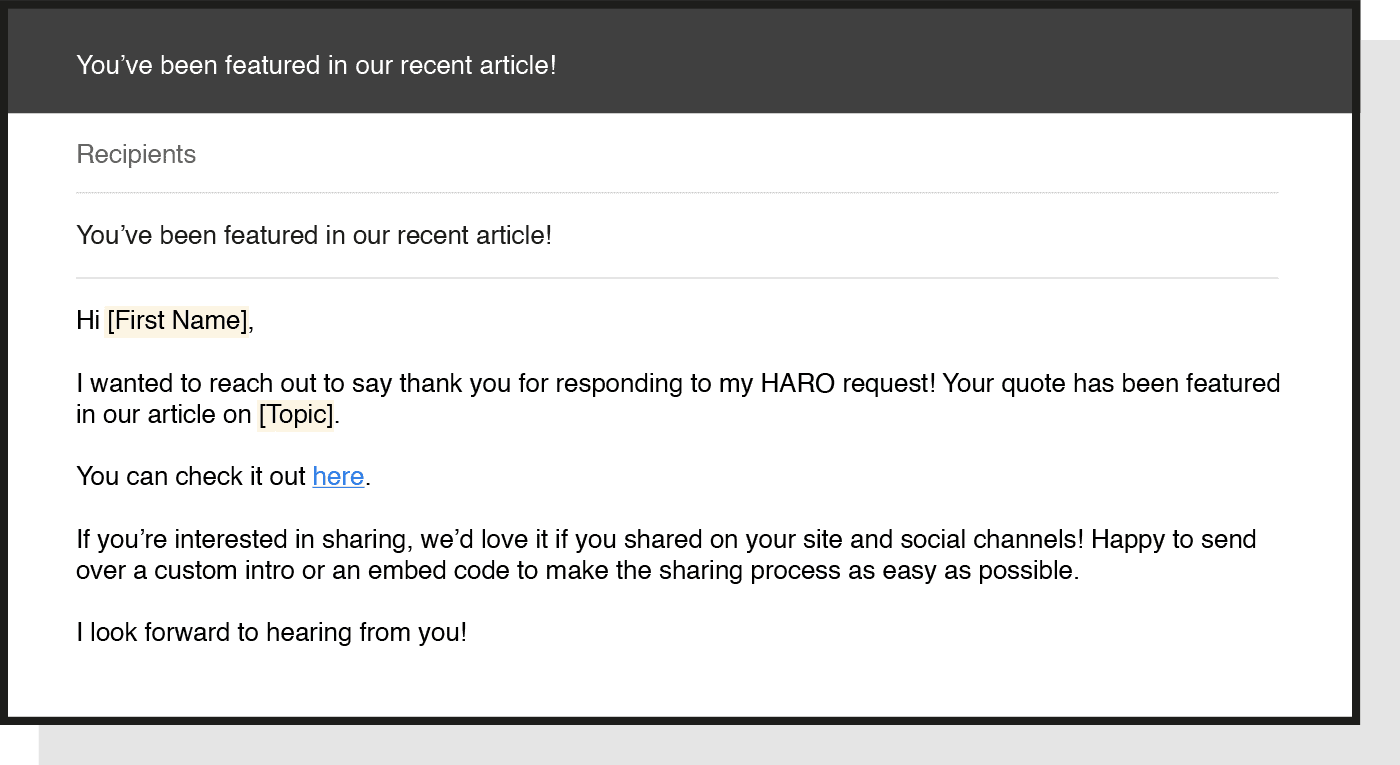Wondering whether using HARO is worth it?
Help a Reporter Out (HARO) is an online sourcing service that connects expert sources to journalists and bloggers. HARO can help you create content that is inherently linkable. With expert sources from relevant websites baked into your piece, you have a built-in database of qualified prospects to reach out to.
To help, we’ve created a guide that will walk you through the process of using HARO to level up and maximize your current link building and content marketing strategy.
In this guide you’ll learn:
- What HARO is
- When to use HARO for your content
- The downsides to HARO
- How to write a successful pitch
- Tips for managing your responses
- How to use HARO to effectively build links
Down to Basics: What is HARO?
HARO has one million sources and over 75,000 journalists and bloggers in its database. HARO not only helps journalists save time sourcing quotes, but it also allows businesses and subject matter experts to share their knowledge.
So, how does it work?
HARO allows you to sign up as a reporter, a source or both. From there, you can personalize your profile to include your specific industry or expertise.
If you’re signed up as a source, HARO will use this information to curate a list of topics that may be relevant to you and send you an email about three times a day.
Here’s a quick overview of how it works:
- Bloggers and journalists will submit queries. These are requests for sources.
- HARO will send these queries out three times a day at 5:35 a.m., 12:35 p.m. and 5:35 p.m. EST.
- Sources will reply to relevant queries.
- Your inbox will be flooded with a variety of valuable sources to use in your next story!
If you’re a reporter, HARO can help you find expert quotes for your upcoming article. It can also help you gauge what topics other companies are creating content on. If you’re signed up as a source, this will help you find upcoming pieces that you can lend a quote to.
When to Use HARO for Your Content
When done right, HARO can level up your content and strengthen your SEO strategy, but it shouldn’t be used for every piece. Below are some tell-tale signs your content could use the boost of HARO.
You Don’t Have Authority
Say you’ve conducted keyword research and you’ve landed on a topic that has the potential to rank, but you don’t have total authority in the space. Sourcing quotes from experts that do have authority can help you fill that knowledge gap. With the growing importance of E-A-T for content, sourcing expert quotes in areas you may not typically be authoritative can help you gain that expert insight on your piece.
You Notice Other Ranking Posts Have Quotes
Before conducting research on any blog post, you should analyze the SERP to see what type of content Google is prioritizing for that keyword. If you notice that several of the ranking articles include expert quotes in their piece, it’s a good sign that you should do the same.
You Lack Expertise in the Area
Those in content marketing know that sometimes you’ll be faced with writing on a topic you know nothing about. Instead of just winging it and trying to cram years of knowledge into a few days, source quotes from experts instead. Not only will this help you shape your piece, but it will also help add that “expertise” element to your content that may have been missing otherwise. This is especially important for Your Money or Your Life (YMYL) topics.
The Downsides to HARO
HARO has been around for awhile and it has largely been taken over by SEOs. With that said, HARO should not be your end-all-be-all for building links.
Depending on your pitch and project, you may receive a pool of unqualified responses — or you may get no responses at all. On top of that, some responses will be from sites that have a low DA or have nothing to do with your pitch. That’s why taking the time to craft a successful pitch is so important.
On the other hand, you may receive a ton of qualified responses with fantastic supplementary quotes to support your article, but that doesn’t mean you’re guaranteed a link. Depending on your outreach tactics, you may receive a majority of social media shares instead. It’s also tough to receive any money page or homepage links as most experts will just share the article.
While there are many pros to adding this tactic to your link building strategy, it will require a bit of patience and detail to receive the high-quality links you’re after.
How to Write a Successful HARO Pitch
Once you’ve brainstormed which piece of content you want to use HARO for, it’s time to write your pitch.
1. Submit a Query
After you’ve set up your account, go to this page to submit a query. This is the most important section as it determines how many — if any — responses you get as well as the number of qualified submissions you’ll receive.
Media Outlet: Put the name of the website or publication you’re requesting a source for. You also have the option to keep this information anonymous.
Outlet URL: In this section, put the URL of the site your piece of content will be published on.
Summary: Your summary is just like an email subject line — it should be specific and easy to understand. We’ve found that summaries in the form of a question are the most successful. For example, if you were writing a piece on the benefits of content marketing your summary might look like this: “What are the biggest benefits of content marketing?”
Another tactic is to add in the exact profile of who you’re looking for. This will make it easy for sources to sift through the variety of queries they see a day. For example, you could write: “Seeking small business owners and CEOs to comment on their career journey.”
Query: The query should include a general description of your story. Make sure to include any direct questions or opinions you’re looking for. You should also include what format the story will be published on — print, radio, online news or a website.
If you’re writing for a site that has a high domain authority make sure to include that as well. We’ve found that including a high DA site will encourage higher response rates.
Requirements: You should set strict requirements to filter out any unqualified sources. Just saying you’re looking for “any personal finance expert” will open up a flood gate of anyone who has ever studied personal finance.
Make requirements as specific as possible. For example, if you’re looking for experts for your piece on content marketing say: “Must be an SEO Manager, Director of SEO, Director of Marketing or a CMO at a mid-size enterprise.”
Here’s an example of a HARO request we submitted in the past:
Because we specified that we were looking for sleep and dream experts, we got a handful of qualified sources right away. We also mentioned exactly what questions we wanted them to answer. This helped us avoid any unrelated commentary or opinions on the subject matter and made it easier for us to organize the different quotes we received.
2. Target Specific Sources
This section is pretty straightforward. Select the categories your query fits into. If you aren’t sure what to put for the second category, select “General” to cast a wider net of sources.
3. Set a Deadline
According to HARO, hundreds of queries are prioritized each day based on urgency and they’ll work to approve queries two days prior to their deadlines. To get the best responses, set a deadline of around four or more days. If you’re in a bind and only have a few days to gather responses, you can mark your request as “urgent.” HARO will prioritize your request and push it out as quickly as possible.
After you submit your request, the team at HARO will review it to make sure it meets their standards. You’ll then receive an email that your request has been accepted. If your request gets denied, review their journalist rules to make sure you’re adhering to their guidelines.
Tips for Managing Your Responses
Once your query is submitted, you’ll start to see responses flood your inbox about two days before your deadline. We’ve seen queries get anywhere from five to 50 responses.
While going through your usual day-to-day, it can be stressful having to filter through the plethora of pitches you’ll receive. Below are our top tips for staying organized.
Create a Gmail Label
To help declutter your email inbox, create a new Gmail label to organize the responses you receive. You can title it: HARO — [SUMMARY OF PITCH]. Then, start moving each pitch to this new folder to help you stay organized and keep everything in one place. If you don’t use Gmail, other email providers should provide the same type of email filtering.
Use Google Sheets to Organize Your Pitches
To make sure nothing slips through the cracks and no pitch goes unopened, create a sheet to organize the pitches you receive. Make sure to include a section for the person’s name, contact information, the company site and the DA of that site. This will help you easily reach out to contacts once your post goes live. Then you can prioritize quotes from experts with higher DA sites.
If you’ve asked several questions in your query, you can organize your columns by question. This will make it easier for you to sort through when building out your piece. To help, we’ve created an example sheet to show you how we’ve organized projects in the past.
Download the Google sheet below and customize it to fit your query and pitches.
How to Use HARO to Build Links
One thing people love almost as much as being quoted — bragging about the different publications they were featured on! Once you’ve built out your piece and have pushed it live, notify the people you’ve featured.
By including experts in your content, you can now use this opportunity to reach out to them and ask them to share your piece. If your piece of content is done well and on an established site, the more likely you are to get that link or share.
This is called mentioned outreach. It’s an effective way to build links, but is commonly overlooked.
Using your Google sheet, organize your pitches by domain authority. This will help you prioritize the sites where a link placement is more valuable.
Here’s an example of an email template we’ve used in the past:
The subject line is simple. It gets straight to the point without giving the prospect too much information — enticing them to open it.
In the body of your email, flatter the prospect. Thank them for their expert insight and let them know your article is now live. Provide them with an easily accessible link, so they don’t have to do any heavy lifting.
Your closing line is the most important part. Let them know that if they love the content, they have your full permission to share on their website and social channels. Offer to send through high-resolution images, an embed code for the visual or custom copy to make their sharing process even easier.
Level Up Your Link Building Strategy
When building links, the goal is to land authority placements. However, those are often the hardest to acquire and using google search operators can only get you so far. If your team has been stuck garnering the same low-quality links each month, consider adding HARO to your link building strategy.
Whether you’re a journalist or a source, HARO can help you build links and awareness to yourself, your company or your clients. It will also work in tandem with your current content marketing strategy — helping you build a more authoritative piece and opening the door to a new pool of prospects. You just have to know how to use the tool right.
Without a successfully crafted pitch and proven outreach method, you may be left with no responses at all. Hopefully our guide above can help you avoid that. Just remember — the platform requires a bit of patience and practice, but the effort is worth the gain.


